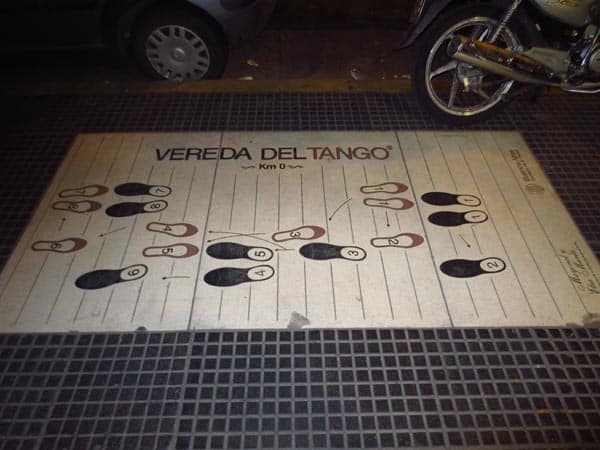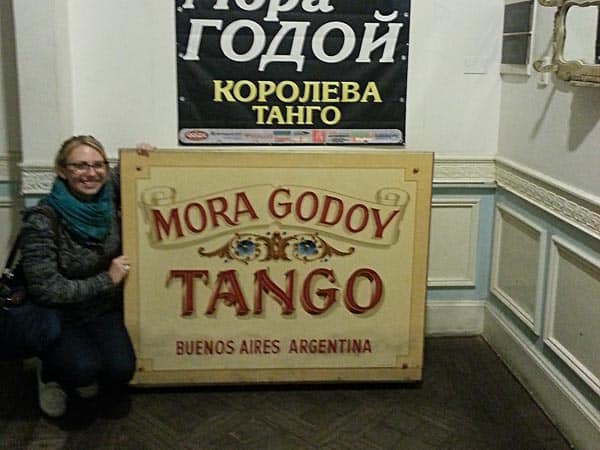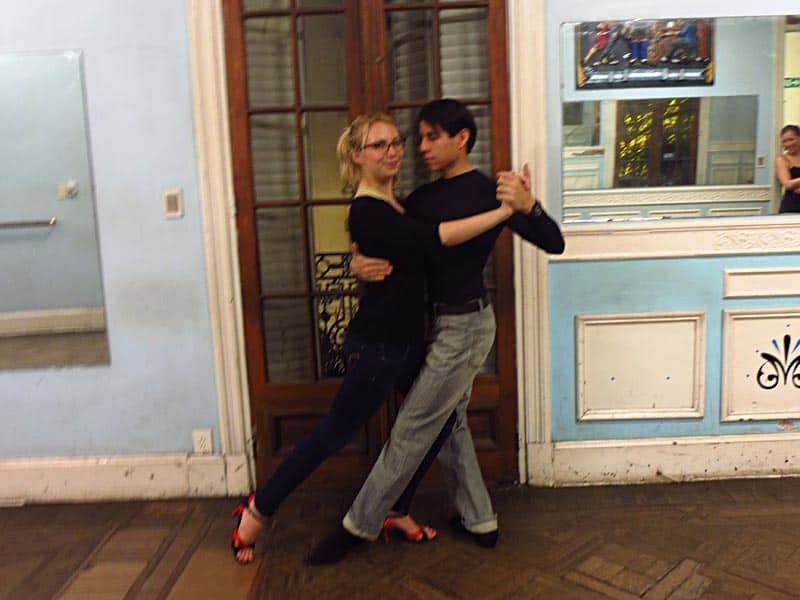I’ve always thought of myself as a fairly open book, super in touch with my emotions and more than happy to share them with the world, but Argentina presented me with a new reality: I might be super afraid of my feelings. Or maybe just feeling in general. Which did not bode well for learning one of the most intimate dances on earth.
Standing in the middle of the Mora Godoy dance studio in Buenos Aires, ten minutes into my first tango lesson, my instructor Matias looked me deep in the eyes and said, “I am going to embrace you now.”
Oh boy.
It soon became clear that I wasn’t just being fed a line by a womanizing Porteno; the tango is inherently intense, emotional, sensual and passionate and if I really wanted to understand what the dance was all about, it was essential that I learn to embrace the embrace.

As our lessons progressed, I got more comfortable with Matias and we would have these fascinating philosophical conversations where we’d discuss the closed-off nature of the world’s emotions. “People don’t embrace anymore,” Matias told me, “we’re all so disconnected from each other – we dance on our own, we listen to music on our own. People get so uncomfortable when they actually have to interact.”
Dude has a point. Living in a world where strangers will dance up on each other in a club without looking each other in the eye, it started to dawn on me that perhaps the reason I was finding the tango somewhat uncomfortable was that it wouldn’t allow me to hide behind the false intimacy with which I’d become familiar. Thinking back, 12 year-old me, who loved slow dancing in a crepe paper decorated gym, already mentally composing my diary entry for that evening detailing every pivot to “My Heart Will Go On” was probably better emotionally equipped to handle connecting with my dance partner. My 12 year-old self also hadn’t yet figured out that being vulnerable enough to connect with someone can lead to getting hurt, too, but I digress.

As scary as it may be to put yourself out there, holding back in tango, as in life, is problematic. If you decide to concentrate on getting your technique and form down, that’s great, but the end result is that your dance comes off a bit superficial, stiff… boring, basically. During one particularly frustrating lesson where my feet weren’t quite matching what my head was telling them to do, Matias stopped our dance mid-step and told me to relax. “My favourite dancers aren’t the ones who get all the steps just right and have perfect technique, my favourites to watch and to dance with are the people who feel the music, who close their eyes and listen to their partner with their body. Of course the steps are important, but the ones who make the tango whatever they need that day — angry or sexy or sad, whatever, those are the best.”
“So, think less and feel more?” I said, “Ok. Just warning you that there will be way more mistakes that way.”
“Of course. But don’t stop when you make a mistake, just keep dancing through. It might be a bit messier, but it makes the whole thing more interesting. That’s life.”



 Follow Us On Instagram
Follow Us On Instagram
